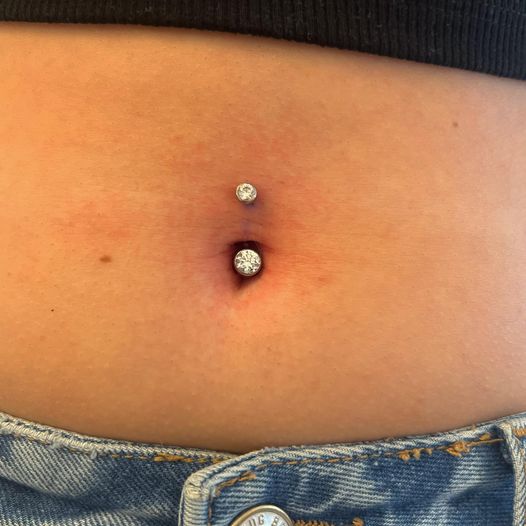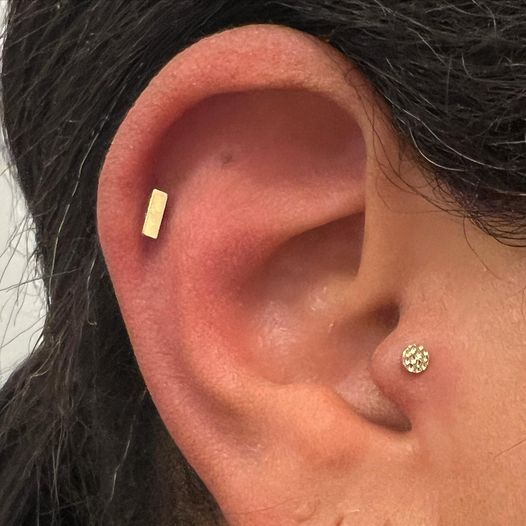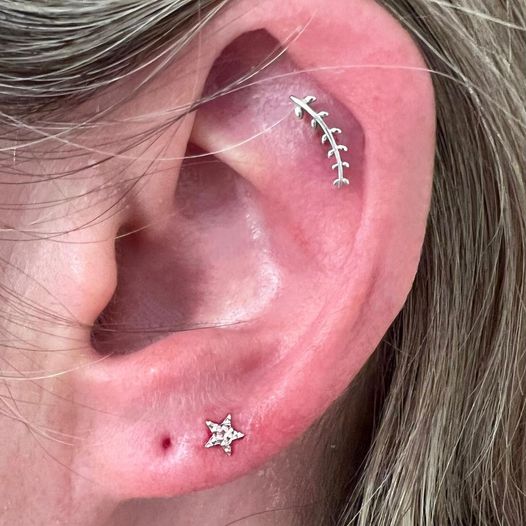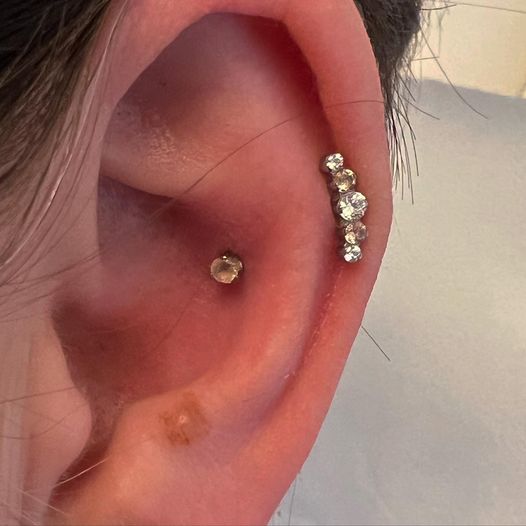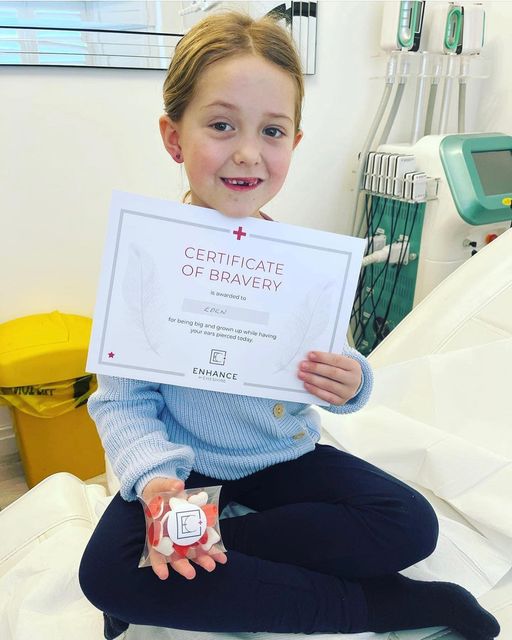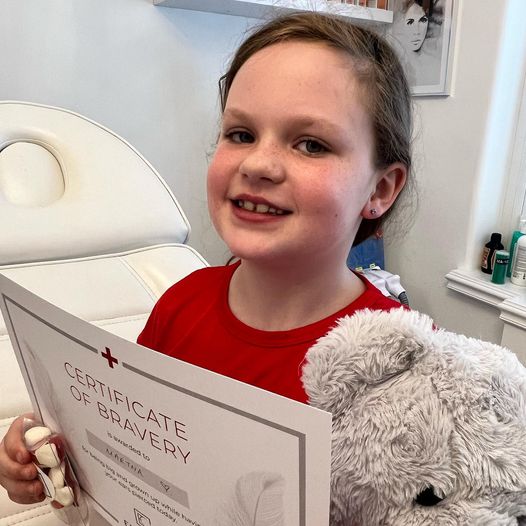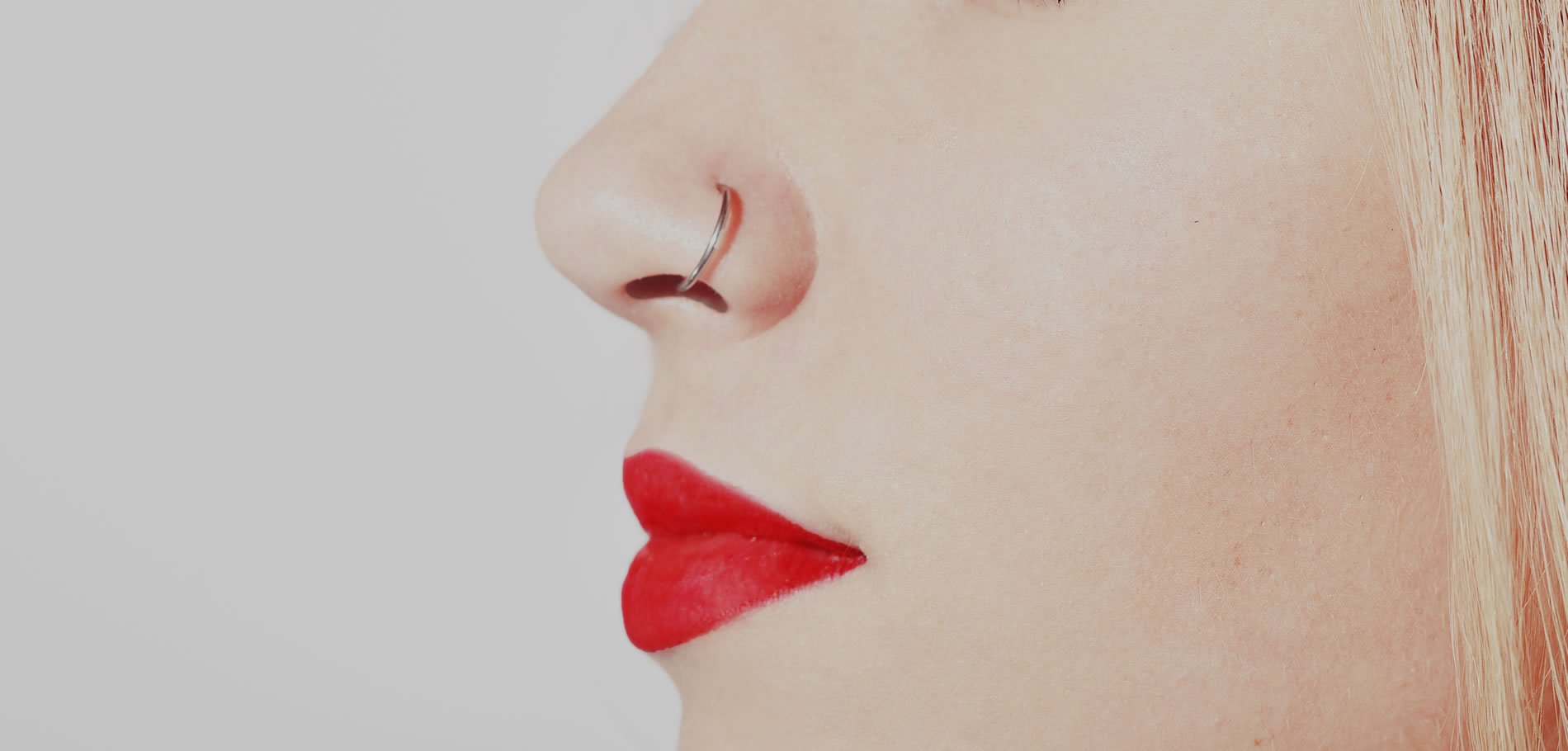
Face & Body Piercings
- Ear Piercing
- Eyebrow Piercing
- Nose Piercing
- Lip Piercing
- Skin Divers
- Nipple Piercing
Plus an extensive range of jewellery is available for you to choose from within clinic. The jewellery choice will be reflected in the price of your piercing.
Can you use numbing cream before your appointment?
I’d rather you didn’t but if you do choose to apply it, it could delay the healing time of the piercing. Honestly the discomfort only lasts a second so it’s best to avoid.
Piercing Regulations & Safety Information
If you are going to get pierced I want you to do it safely! Here’s some information which I hope you will find useful.
Piercing Tools and Metals
All posts placed through your piercing site are made from Medical Grade Titanium, be it a nose, an ear or a nipple. Medical Grade Titanium is very inert and highly unlikely to cause an allergic reaction – all the Jewellery that is stocked is approved by the APP (Association of Professional Piercers). The posts are sterilised with an autoclave. Single use needles are used at all times.
Age Restrictions
Minimum of age of 6 for lobes only with parental consent. Please be advised that the child needs to have large enough ears to support a healthy piercing and the child should be mature enough to ask for the piercing and understand the aftercare. A child will never be pierced without their full consent.
Minimum of age 14 for higher up the ear and naval.
Minimum of age 18 for nipples.
Piercing Healing Times
Please note these healing times listed are an approximation only and based on the average healing times experienced by most clients.
The speed your piercing may heal is affected by a variety of factors.
Ear Lobe – 6 – 8 weeks
Tragus, Upper and Lower Conch, Helix, Snug, Rook etc – 3 to 6 Months but can take much longer.
Navel – 6 Months
Nipple – 3-6 Months
Nostril – 3-6 months
Aftercare for Body Piercing
PIERCING AFTERCARE
Each body is unique and healing times vary considerably. If you have any questions, please contact your piercer.
CLEANING YOUR PIERCING
- Packaged sterile saline (with no additives, read the label) is a gentle choice for piercing aftercare.
- WASH YOUR HANDS thoroughly prior to cleaning or touching your piercing.
- SALINE SPRAY the area for 2 seconds – keep the saline on for 10 seconds.
- CLEAN your piercing twice daily for 4 weeks.
- DRY by gently patting with clean, disposable paper products only. Cloth towels can harbour bacteria and snag on jewellery, causing injury. Drying the area with a cool hairdryer is also okay.
MAINTAIN A HEALTHY PIERCING
- WASH YOUR HANDS prior to touching the piercing; leave it alone except when cleaning. During healing, it is not necessary to rotate your jewellery.
- STAY HEALTHY; the healthier your lifestyle, the easier it will be for your piercing to heal. Get enough sleep and eat a nutritious diet. Exercise during healing is fine; listen to your body.
- CHANGE ALL BEDDING regularly, especially those in contact with the piercing.
- WEAR SUITABLE CLOTHING; comfortable, breathable clothing will protect your piercing – especially while you are sleeping.
- TAKE SHOWERS as showers tend to be safer than taking baths. Bathtubs can harbour bacteria. If you bathe in a tub, clean it well before each use and rinse off your piercing when you get out.
WHAT TO EXPECT FOLLOWING A PIERCING
- INITIALLY: some bleeding, localised swelling, tenderness, or bruising.
- DURING HEALING: some discolouration, itching, secretion of a whitish-yellow fluid (not pus) that will form some crust on the jewellery. The tissue may tighten around the jewellery as it heals.
- ONCE HEALED: the jewellery may not move freely in the piercing; do not force it. If you fail to include cleaning your piercing as part of your daily hygiene routine, normal but smelly bodily secretions may accumulate.
- BE PATIENT: A piercing may seem healed before the healing process is complete. This is because tissue heals from the outside in, and although it feels fine, the interior remains fragile. Be patient, and keep cleaning throughout the entire healing period.
- AND REMEMBER: Even healed piercings can shrink or close in minutes after having been there for years! This varies from person to person; if you like your piercing, keep jewellery in and do not leave the piercing channel empty.
YOU SHOULD AVOID
- MOVING JEWELLERY in an unhealed piercing, or picking away dried discharge with your fingers.
- CLEANING WITH with Betadine®, Hibiciens®, alcohol, hydrogen peroxide, Dial® or other soaps containing triclosan, as these can damage skin cells.
- OINTMENTS as they prevent necessary air circulation.
- Bactine®, pierced ear care solutions and other products containing Benzalkonium Chloride. (BZK). These can be irritating and are not intended for long term wound care.
- OVER CLEANING as this can delay your healing and irritate your piercing.
- TRAUMA such as friction from clothing, excessive motion of the area, playing with the jewellery, and vigorous cleaning. These activities can cause the formation of unsightly and uncomfortable scar tissue, migration, prolonged healing, and other complications.
- ORAL CONTACT, rough play, and contact with others’ bodily fluids on or near your piercing during healing.
- STRESS & RECREATIONAL DRUGS, including excessive caffeine, nicotine, and alcohol.
- SUBMERGING the piercing in unhygienic bodies of water such as lakes, pools, hot tubs, etc. Or, protect your piercing using a waterproof wound-sealant bandage.
- COSMETICS such as beauty and personal care products on or around the piercing including cosmetics, lotions, and sprays, etc.
- HANGING CHARMS or any object from your jewellery until the piercing is fully healed.
PIERCING HINTS & TIPS
FOR YOUR JEWELLERY
- Unless there is a problem with the size, style, or material of the initial jewellery, leave it in the place for the entire healing period.
- Contact your piercer if your jewellery must be removed (such as for a medical procedure).
- In the event an infection is suspected, quality jewellery or an inert alternative should be left in place to allow for drainage of the infection. If the jewellery is removed, the surface cells can close up, which can seal the infection inside the piercing channel and result in an abscess.
- Should you decide you no longer want the piercing and it is not infected, simply remove the jewellery (or have a professional piercer remove it) and continue cleaning the piercing until the hole closes. In most cases only a small mark will remain.
- Do not remove jewellery unless instructed to by a medical professional.
- Always see a qualified piercer to perform any jewellery change that becomes necessary during healing.
NAVEL PIERCINGS
- A hard, vented eye patch (sold at pharmacies) can be applied under tight clothing (such as nylon stockings) or secured using a length of Ace® bandage around the body (to avoid irritation from adhesive). This can protect the area from restrictive clothing, excess irritation, and impact during physical activities such as contact sports.
EAR, EAR CARTILAGE & FACIAL PIERCINGS
- Use the t-shirt trick: Dress your pillow in a large, clean t-shirt and turn it nightly; one clean t-shirt provides four clean surfaces for sleeping.
- Maintain cleanliness of telephones, headphones, eyeglasses, helmets, hats, and anything that contacts the pierced area.
- Use caution when styling your hair and advise your stylist of a new or healing piercing.
NIPPLE PIERCINGS
- The support of a tight cotton shirt or sports bra may provide protection and feel comfortable, especially for sleeping.
- Avoid lace bras.
